This post contains affiliate links.
This board and batten park model was built to house code by a father-and-eight-year-old son duo, and the results are gorgeous! The home is 392 square feet and includes a spacious living room, nice kitchen and full bath and a private back bedroom with closet space.
After the success of this build, they formed Yesterway Cabin Company and are working on more tiny homes! What do you think?
Don’t miss other interesting container homes like this, join our Free Tiny House Newsletter for more!
Board and Batten One-Floor Tiny House w/ Big Bedroom
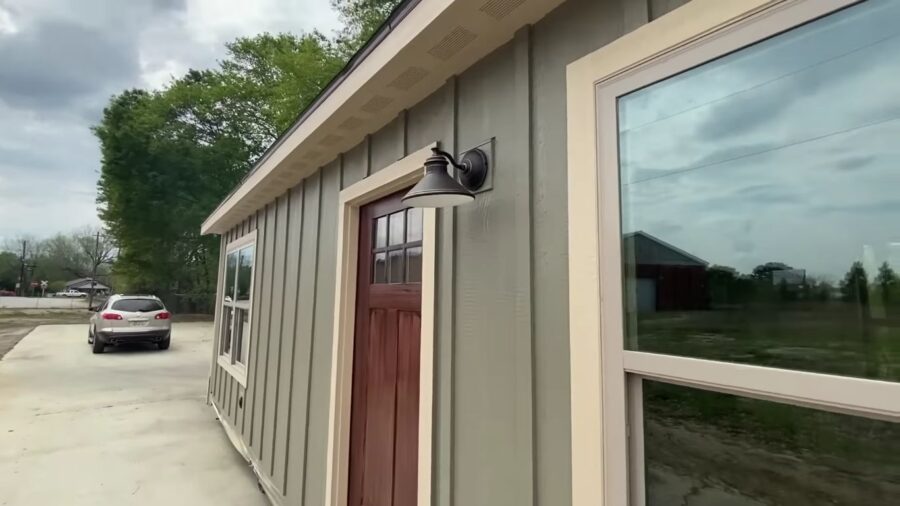
Images via Get After It/YouTube
There’s a large, open living area.
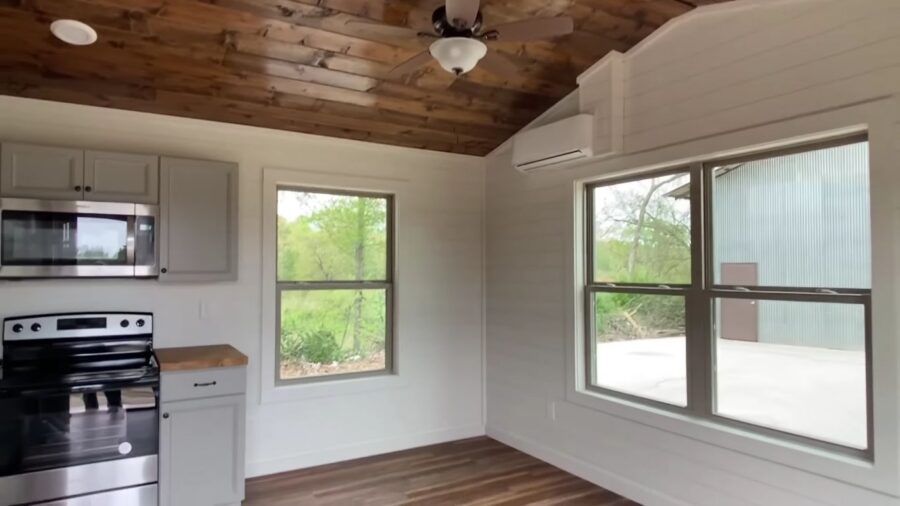
Images via Get After It/YouTube
The kitchen has a regular-size stove.
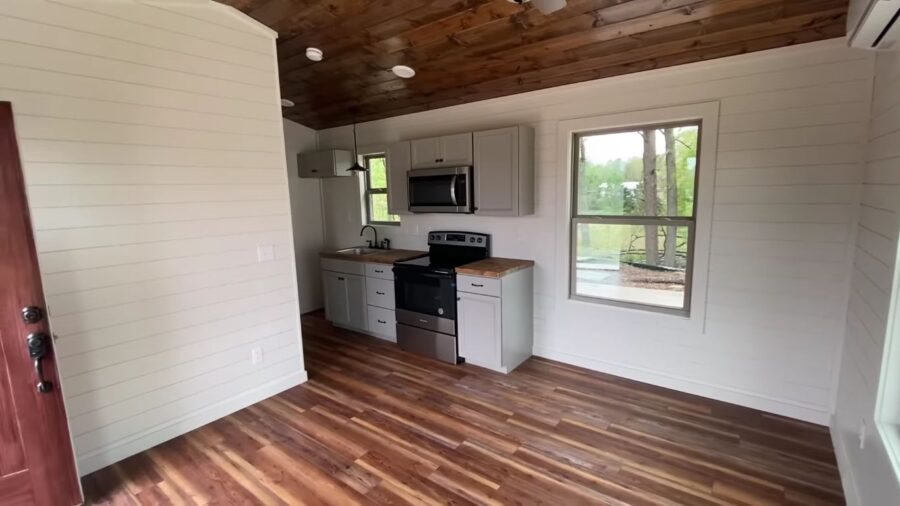
Images via Get After It/YouTube
There’s a great full bathroom.
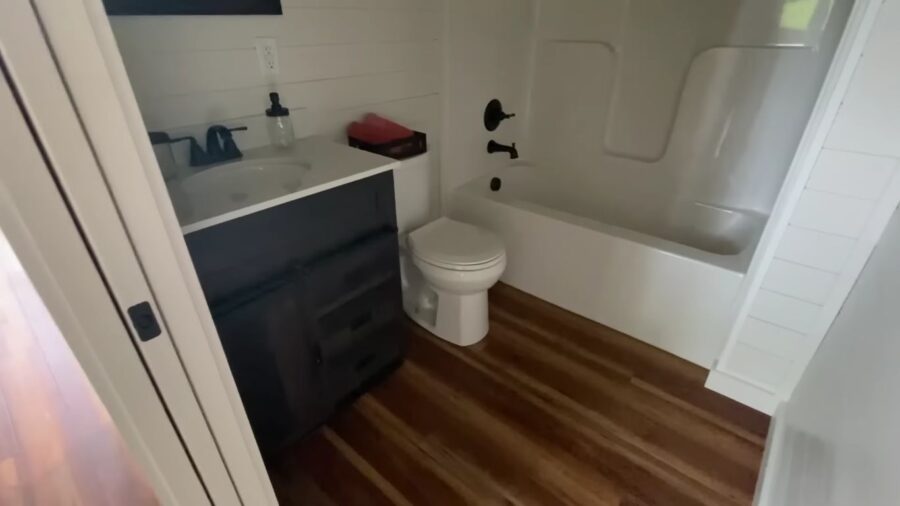
Images via Get After It/YouTube
There’s a mini-split to keep things comfortable.
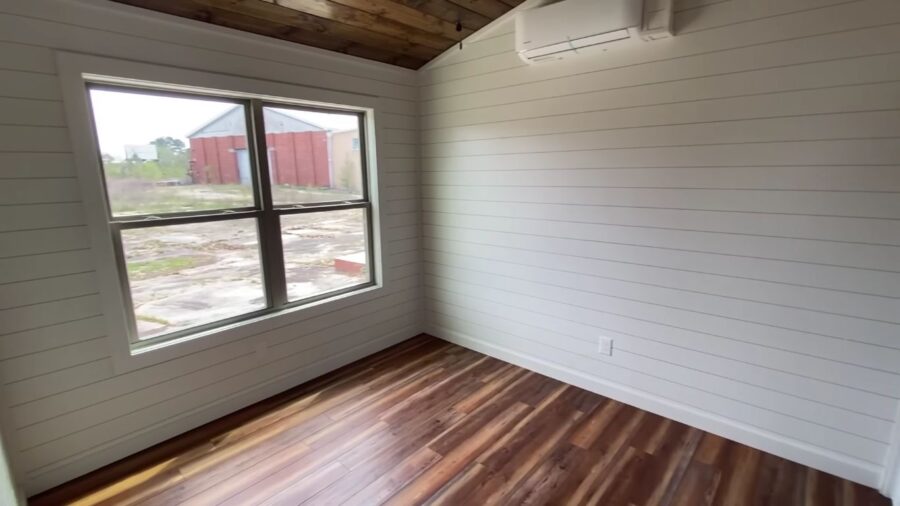
Images via Get After It/YouTube
The color of the board and batten are gorgeous.
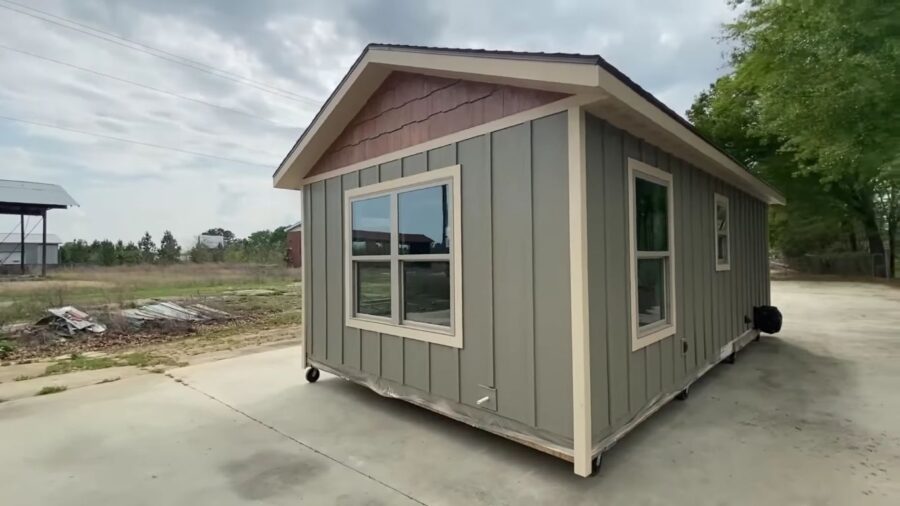
Images via Get After It/YouTube
VIDEO: Incredible Tiny (Modular) Home Walk Through!
Learn more
Related stories
- 15×35 Monarca Park Model Tiny Home
- Urban Park Max: Ultra Modern Park Model Tiny Home by Tru Form Tiny
- Their Park Model Tiny Home in Austin, Texas
Our big thanks to James D. for sharing!
You can share this using the e-mail and social media re-share buttons below. Thanks!
If you enjoyed this you’ll LOVE our Free Daily Tiny House Newsletter with even more!
You can also join our Small House Newsletter!
Also, try our Tiny Houses For Sale Newsletter! Thank you!
More Like This: Tiny Houses | Tiny Cabins | Tiny Homes with no lofts | Tiny House Interiors | For Sale
See The Latest: Go Back Home to See Our Latest Tiny Houses
This post contains affiliate links.
Natalie C. McKee
Latest posts by Natalie C. McKee (see all)
- Anjali’s 4 Years of Van Life - April 17, 2024
- Touring the Spacious Sangja Tiny House: A 28ft x 8.5ft Home with a First-Floor Bed - April 17, 2024
- Family of 3’s 90% Recycled School Bus Conversion - April 17, 2024




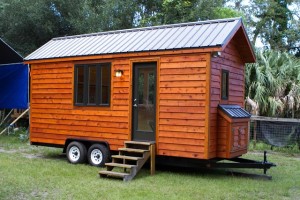

I like the size and layout. A THOW is just too narrow for me and they all look so similar inside. Given the space constraints in a tiny house, I would put in an On Demand Water Heater rather than that monstrosity.
Just mind that Tankless means going with either gas or upgrading the home to a much higher Amp Service… Along with dealing with more frequent maintenance, especially in areas with hard water issues.
I disagree. A typical tankless runs off of 240 volts, the same as the stove/oven in the kitchen. I know 2 people who have used a 240v tankless in their homes for many years with no issues. If the electrical panel is only rated at 100 Amps, then it does need to be upgraded to 200 Amps, easily and cheaply done during construction.
As to hard water, that will affect the heating elements in a tank heater the same way as well as all the other plumbing fixtures. Install a water softener if it really is a problem. Modern tankless heaters have minimized this problem.
For the mini-split issue below, you can move the inside exchanger pretty much anywhere you want, even near the floor. Heat pumps use significantly less energy than baseboards (unless the outside temp drops below freezing, where you would need supplemental heat).
Sorry but you seem to misunderstand, I stated nothing about what voltage the heater would be running on because that’s mostly irrelevant! What matters is how much total power you can give the heater at any one time and Power=Voltage x Amperage, which has to meet the requirements for heating a given volume of water flow per second to meet the expected water usage demand.
Normal tiny house service is only either 50A or 30A, it’s unusual to have 200A and that’s still more or less a minimum to consider an electrical tankless. Depending on your actual water usage needs it can be 400A or higher to actually meet that need. Like being able to do laundry, wash dishes or take a shower at the same time. So it’s not something you can simply assume can be run on just electricity in a tiny house unless it’s only for a small sink.
While options like water softeners don’t entirely solve the problem of maintenance. It just can make it easier. Water can have other issues besides being too hard anyway. Options like water softeners are also not always an option because they add cost and take up space that may not be available or cost effective for someone’s budget.
Fact is there are simply different pros and cons between tank and tankless heaters. More regular maintenance is just what a tankless system requires. It doesn’t mean the tankless will wear out faster, they will typically outlast a tankless system, but that doesn’t change that they require more regular maintenance. It’s just simple maintenance as you basically just need to flush the system out every now and then but it still has to be done more regularly for a tankless system.
Correction “they will typically outlast a tankless system” meant to type tank system and not tankless there…
I really like the layout of this unit, but I do have some questions. Is the space for the washer large enough for an apartment size stack washer/dryer. Can the stove be propane rather than elect.? Can you do away with the minisplits? Where I live, you don’t need A/C, and having a heater high near the ceiling is a total waste of utilities. Heat rises. Having baseboard heaters would be more efficient. I didn’t see any closets or storage space other than in the bedroom. A large pantry in the kitchen would be awesome. Some type of storage is important in these tiny homes. Unfortunately, most builders seem to not think of this. I do a lot of canning so I need space to store jars, etc. Lastly, how is this transported? Surely not with those tiny wheels, lol.
They have a website, FAQ, and contact details for any questions.
But I can tell you the space is specifically made for a stackable washer and dryer. While they have to follow IRC code, which limits structural customization but any fixture, finishes, etc. can be all negotiated before any contract is signed and building starts. They have a transport company they work with but make sure you’re in a state that accepts their certification and transport costs are acceptable, which they will tell you up front to be sure you’re okay with it.
Also keep in mind, you’re not limited to built-ins for storage and some space is just meant for you to customize with furniture to provide those functions.
I noticed that the hot water heater does not have pipping form the pan to the out side. This is important to have so the water does not over flow the pan.
Well, there wasn’t enough shown to determine that, it can simply be drained beneath and run to one of the existing points or just drain straight down. It doesn’t need to stick out but he built to IRC. So presumably that is a detail that is taken care of and you can always make sure by stipulating it when ordering one…